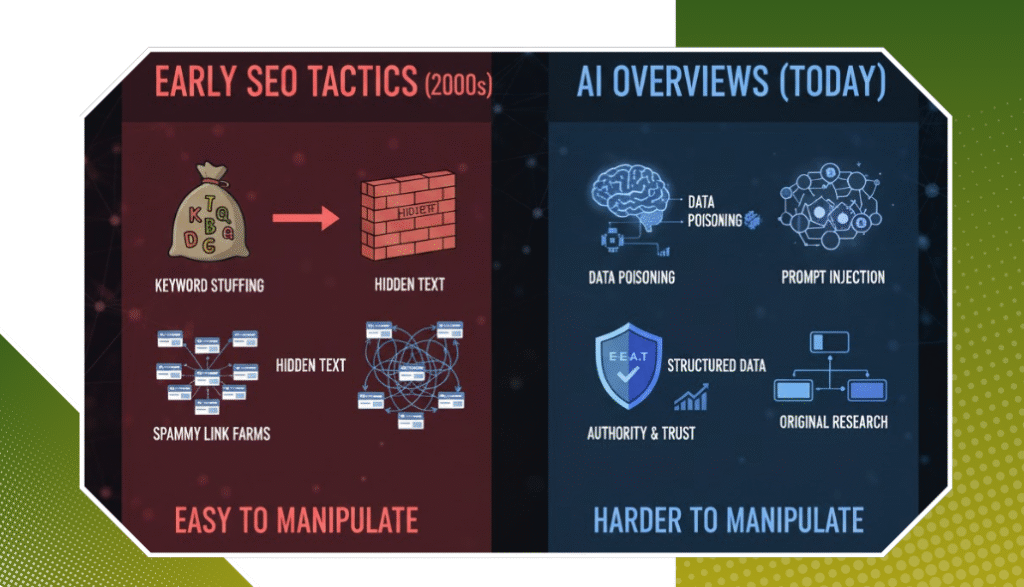The Canadian educational environment has changed radically, with 93% of students now carrying out their school research on the internet. This digital transformation demands a robust SEO strategy to ensure your institution stands out among Canada’s 223 recognised public and private universities.
This blog explores proven SEO strategies tailored for Canadian educational institutions. It helps boost your institution’s online visibility, attract qualified prospective students, optimise your digital presence for the Canadian market, stay ahead of competing institutions, and drive genuine engagement with your target audience.
You’ll discover practical techniques to enhance your institution’s search engine rankings while building a strong digital foundation for sustainable growth in student enrolment.
Understanding SEO for Educational Institutions
Search Engine Optimisation (SEO) transforms how educational institutions connect with potential students online. It’s a strategic process of enhancing website visibility in search engine results through targeted content, technical improvements, and user experience optimisation.
Unique SEO Challenges for Canadian Educational Institutions
Educational institutions in Canada face distinct SEO challenges:
- Language Requirements: Creating bilingual content for English and French-speaking audiences
- Regional Competition: Standing out among 223 public and private universities across provinces
- Program Differentiation: Highlighting unique course offerings in saturated academic markets
The Value of SEO in Higher Education Marketing
The role of SEO in higher education marketing extends beyond visibility:
- Attracting qualified student leads
- Building institutional credibility
- Showcasing academic achievements
- Demonstrating research excellence
- Supporting recruitment goals
Key Areas for SEO Strategy Adaptation
Canadian educational institutions must adapt their SEO strategies to address the following:
- Mobile-first student audiences
- International student recruitment
- Program-specific search intent
- Campus location considerations
- Admission cycle timing
Keyword Optimisation and Research Tools
Identifying the right keywords shapes your educational institution’s digital success. Your prospective students use specific search terms when looking for academic programs – capturing these terms is crucial for visibility.
Essential Keyword Categories for Educational Institutions:
- Program-specific terms (e.g., “business administration degree Toronto”)
- Location-based searches (“universities in Ontario”)
- Career-focused queries (“best schools for software engineering”)
- Admission-related searches (“How to apply to Canadian universities”)
Practical Keyword Research Tools:
- Google Keyword Planner – Reveals search volumes and competition levels
- SEMrush Education Toolkit – Analyses competitor keywords
- Ahrefs – Tracks keyword ranking positions
- AnswerThePublic – Uncovers student questions and concerns
Best Practices for Keyword Integration:
- Place keywords naturally in page titles, headers, and meta descriptions
- Include long-tail keywords in program descriptions
- Use location-specific terms on landing pages
- Incorporate keywords in image alt text and URLs
- Maintain a keyword density of 1-2% in content
Content Marketing Strategies for Educational Institutions
Creating applicable content that resonates with prospective students requires a strategic mix of different content types:
Program Guides
Include the following in your program guides:
- Detailed course descriptions
- Career opportunities
- Student success stories
- Admission requirements
Student-Focused Blog Posts
Your blog posts should focus on topics that interest students, such as:
- Campus life experiences
- Study tips and resources
- Research highlights
- Faculty achievements
FAQ Content
Address common questions and concerns through dedicated FAQ pages covering:
- Application processes
- Financial aid options
- Housing information
- International student requirements
Your content should address specific pain points:
- Cost concerns and scholarship opportunities
- Work-study balance strategies
- Post-graduation employment rates
- Student support services
Creating content that directly answers these questions helps build trust with prospective students and improves your institution’s search visibility. Regular content updates tell search engines that your website remains relevant and reputable in education.
Enhancing User Experience (UX) on Educational Websites
A well-designed educational website creates an engaging digital environment for prospective students. Your institution’s website needs these essential UX elements:
- Fast Loading Speed: Aim for page load times under 3 seconds
- Intuitive Navigation: Create clear menu structures and breadcrumb trails
- Responsive Design: Ensure seamless viewing across all devices
- Clear Call-to-Actions: Position application buttons and contact forms prominently
- Accessible Content: Implement proper heading hierarchy and alt text for images
Importance of Mobile Optimisation
Mobile optimisation plays a critical role in student engagement. Research shows that 71% of prospective students browse educational websites on their smartphones. Your mobile design should include the following:
- Touch-friendly buttons and forms
- Readable text without zooming
- Compressed images for faster loading
- Simplified navigation menus
- Click-to-call functionality
Regular Website Performance Testing
Regular website performance testing helps identify and fix UX issues before they impact your search rankings or student engagement rates.
Local SEO Strategies to Attract Nearby Students
Local visibility in search results is vital in attracting students from your immediate geographical area. Your educational institution must appear prominently when potential students search for “schools near me” or specific programs in your region.
Essential Local SEO Components:
- Publish and verify your Google My Business profile
- Add accurate contact information, operating hours, and campus photos
- Maintain consistent NAP (Name, Address, Phone) details across all online platforms
- Encourage and respond to student reviews
Local Keyword Optimisation Tips:
- Target location-specific keywords (e.g., “business school in Toronto”)
- Include neighbourhood names and nearby landmarks in your content
- Create dedicated landing pages for each campus location
- Add structured data markup for educational organisations
Local Content Strategies:
- Highlight community involvement and local partnerships
- Showcase campus events and local student activities
- Create content about your institution’s impact on the local community
- Feature success stories of local graduates
Leveraging Video Content and Social Media Integration
Video content creates powerful engagement opportunities for educational institutions. Virtual campus tours allow aspiring students to explore facilities from anywhere, while student testimonials build trust and authenticity. Your institution can boost SEO performance by:
- Optimising video titles and descriptions with targeted keywords
- Creating custom thumbnails to increase click-through rates
- Adding closed captions for accessibility and SEO benefits
- Embedding videos on relevant landing pages
Social media platforms amplify your institution’s reach and drive qualified traffic. Consider these proven strategies:
- Share bite-sized video clips across Instagram and TikTok
- Create dedicated hashtags for campus events and programs
- Cross-promote video content on LinkedIn for professional networking
- Encourage student-generated content through social media challenges
Your video content strategy should align with student search intent. Popular formats include:
- Program-specific overviews
- Faculty interviews
- Student success stories
- Campus life highlights
- Live Q&A sessions
Building High-Quality Backlinks and Monitoring Search Engine Algorithms
Quality backlinks serve as digital votes of confidence for educational institutions. You’ll strengthen your domain authority through partnerships with:
- Academic Journals: Submit research papers and educational content
- Industry Publications: Share expert insights and educational trends
- Educational Organisations: Create mutual linking opportunities
- Alumni Networks: Leverage graduate success stories and testimonials
Build authentic relationships through:
- Guest lecturing opportunities
- Joint research projects
- Educational conferences
- Student exchange programs
Stay alert to algorithm changes by:
- Monitoring Google’s official announcements
- Using SEO tracking tools
- Analysing traffic patterns
- Adapting content strategies promptly
Natural link building takes time. To establish lasting authority in the educational sector, prioritise genuine relationships over quick wins. Focus on .edu and .gov domains—these high-authority backlinks signal exceptional credibility to search engines.
Optimising for Voice Search and Utilising AI Tools in SEO Strategies
Voice search has changed how potential students look for information about educational institutions. Recent studies show that 58% of students use voice search to research schools and programs on their mobile devices.
Key Voice Search Optimisation Techniques:
- Structure content in a question-and-answer format
- Use natural language patterns in your content
- Include long-tail conversational keywords
- Create FAQ pages addressing common student queries
- Optimise for “near me” searches
AI Tools for Educational SEO:
- Jasper AI: Creates engaging program descriptions
- Surfer SEO: Analyses content optimisation opportunities
- MarketMuse: Identifies topic gaps in educational content
- Frase.io: Generates student-focused FAQ content
- ChatGPT: Assists in natural language optimisation
Voice search queries typically follow conversational patterns: “What programs does [university name] offer?” or “Where is the nearest college campus?” Adapt your content to match these natural speech patterns.
AI-Powered Content Analysis:
- Real-time keyword tracking
- Student search intent analysis
- Competitor content gap identification
- Automated content optimisation suggestions
- Performance metrics monitoring
Educational institutions can use these AI tools to create targeted content that resonates with prospective students while following educational standards and regulations.
Conclusion
The digital world requires effective strategies to stay competitive in Canada’s education sector. SEO techniques enable institutions to reach potential students, improve visibility, and establish a reputable online presence.
Your institution deserves to be noticed in search results. By using these SEO Strategies for Educational Institutions in Canada, you’ll connect with prospective students and boost enrolment.
Want to enhance your institution’s online presence? Specialised SEO services can assist Canadian educational institutions in achieving their visibility objectives. Contact Us at Rankingeek Marketing Agency today to create a customised plan that positions your institution as a leader in digital education marketing.




